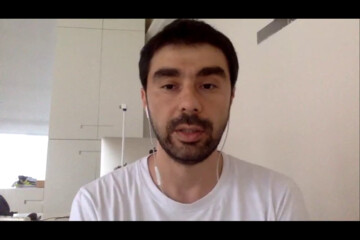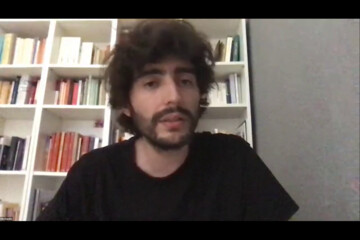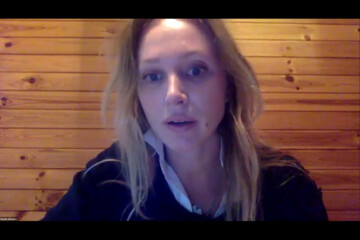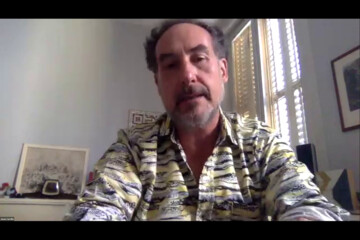The discussion I will make around the term la perruque is about the management of labour and working hours in a cultural institution, and particularly how these notions can be organised in a collaborative way. I borrow the term la perruque from Michel de Certeau’s The Practice of Everyday Life[1] in which he scrutinises social representation and modes of social behaviour.
In French la perruque literally means the wig and Certeau uses this term to describe a “worker’s own work disguised as work for his employer”. He explores this concept of the wig as “It differs from pilfering in that nothing of material value is stolen. It differs from absenteeism in that the worker is officially on the job. La perruque may be as simple a matter as a secretary’s writing a love letter on ‘company time’ or as complex as a cabinetmaker’s ‘borrowing’ a lathe to make a piece of furniture for his living room”.[2] By applying Certeau’s critical remark as a basis for this presentation, I will take on an institutional investigation that searches for ways in which the cultural institution can be more open, → solidarity oriented as well as generous. I will tackle this term with the purpose of going beyond the institution’s hierarchical or individualistic regulations about labour time. The reorganisation, I have in mind, concerns the diversion of time; appropriated by cultural institutions, to a seemingly more collaborative and communal direction.
For Certeau, the diversion of time from work means free and creative labour that is not directed toward a financial profit. It can also be seen as an act of solidarity with others, such as friends, family or co-workers. Certeau deploys the term in two ways: First, he presents la perruque as a tactic, meaning that it can be a form of engagement in which the “weak makes use of the strong”. Different from a strategy, it is a form of action aiming at “escaping without leaving”. In essence, it is a practice of “anti-discipline”, a tactic that aims at a fair re-composition of the notion of time, which is usually evaluated negatively by employers. Secondly, he uses the term to name his own scientific practice. He argues that instead of focusing on the existing order of knowledge, as was expected from a researcher in a scientific institution, his examination of everyday practices can be seen as a version of la perruque. By researching the practices that were not seen as a legitimate object of study by academic institutions he uses his time – that was supposed to be organised by the scientific institution he is working for – for his own interests.
More contemporary uses operationalise the term la perruque as a “work avoidance strategy”. From a management perspective, this strategy is perceived as mischief, deception and a practice that needs to be strictly monitored and prevented by the employer.[3]
“Frequent systemic use of both company and personal mobile electronic devices, (smartphones, PDAs, tablets, laptops, hot spots, etc.) prolific transmissions of emails, texts, web surfing for shopping, news, sports scores, games, homework research, and keeping tabs on children and family members. Personal calls made to family members, friends, personal business associates, job interviews, doctor and car appointments. Paying e-bills online or with paper checks; E-Commerce shopping, multi-tasking between business vs. personal actions on two or more identical or similar mobile devices” are just some of the examples listed in this category of avoidance strategy. [4] It is also stated in the studies that what makes la perruque so widespread is the fact that “bosses and supervisors were overtly seen and heard to use digital work devices for personal business, the employees felt free to do the same.” [5]
From this point of view, I will dwell on the particularities of the organisation of labour time at a cultural institution. It is a complex phenomenon. There is of course this aspect in which the institution monitors and controls staff in order to make sure that they do not use working hours for their individual interests. This is in line with the meaning of la perruque I explained before. But I believe that the issue of labour time at a cultural institution has other aspects. There is also an ongoing area of bargaining between the cultural institution itself and the artists, authors, designers, researchers, visitors, students, users, and even the public in general who collaborate with the institution as well as “work” in it. Such constituents, as we define them, are not only shaping the institution through their use of the physical space and their contributions and criticisms regarding the institution’s content, but their requests, applications, requirements and claims also impact the organisation’s sense of labour and its working hours. Researching, collecting, → learning, interpreting, designing and exhibiting with the constituents are blurred zones in which the ownership of time and work becomes unclear. The time spent on “cultural work” cannot be easily associated with an individual’s or group’s exclusive benefits.
A recent example can be SALT’s collaboration with the artist duo Cooking Sections (Alon Schwabe and Daniel Fernandez) from London. For an upcoming L’Internationale exhibition, we have been working together for more than two years on a comprehensive research project dealing with eating habits under the circumstances caused by human-induced climate change. The research focuses on the local scene in Turkey and aims to develop new ways to collaborate with local producers, researchers, activists and experts. Due to the language barrier and the issues of familiarity with local networks, such a project has necessitated that to a large extent the research is done by SALT’s staff. Different to working for an exhibition organised by the institution, this research consisted of the institution undertaking the responsibility of bringing together all the necessary information and relations for the artists to produce their work. The labour time of the institution’s staff has been devoted to this project. The artists in turn have also actively contributed to the managerial aspects of the project which would normally be the institution’s responsibility.
As the research progressed, a third aspect of the organisation of labour time at the institution became obvious: working with producers and other researchers proved to be most beneficial for the individuals involved, since the research involved different ways of campaigning for local products, and matching the information collected by the institutions’ researchers with the other research projects. This is the aspect in which the la perruque takes a different, more collaborative meaning. People working for the institution organise their labour time in such a way that their work becomes the work of others – producers, researchers, activists, etc. In doing so, the institutional work itself becomes the work of others, such as doing research for other researchers, working on organising campaigns for local products or trying to extract information from an archive for other research. When this version of la perruque becomes institutionalised, the resources – intellectual, financial, organisational and physical – owned by the institution can become more open, generous to others and governed in a communal manner. The work of others should thus be disguised as work for the institution.






